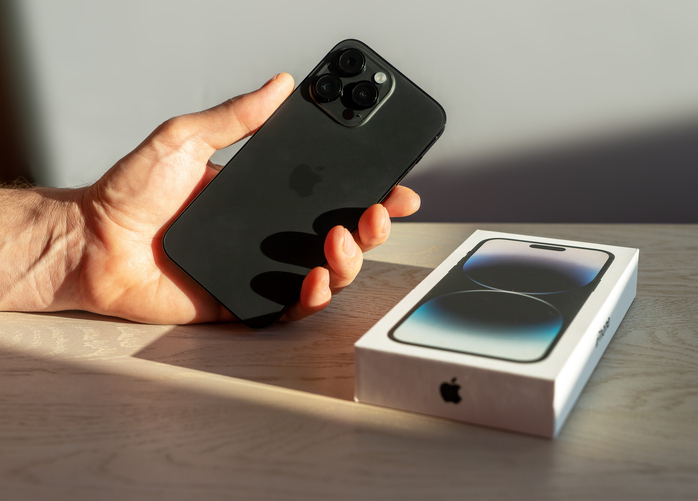Transitioning to a new iPhone can be exciting yet overwhelming, especially for those who are new to iOS or upgrading from an older model. But the good news is that today’s iPhones are more intuitive than ever before – so the switch shouldn’t be too difficult. You just need to know a few of the basics.
Setting Up Your New iPhone
When you first unbox your iPhone, you’ll go through a series of steps to set it up. Here’s a simplified guide to make this process smooth:
- Turn on Your iPhone: Press and hold the side button until the Apple logo appears.
- Language and Region: Choose your preferred language and your region.
- Quick Start: If you have another iPhone or iPad, you can use Quick Start to automatically transfer your data. Just bring the two devices close together and follow the prompts.
- Wi-Fi Setup: Connect to a Wi-Fi network to activate your iPhone and download the necessary data.
- Apple ID: Sign in with your Apple ID. If you don’t have one, now’s the time to create it.
Another key step in setting up your phone is making sure it’s protected – as in physically protected. (The last thing you want to do is drop your brand new phone and shatter the screen or scrape up the beautiful edges.) It’s a good idea to find an iPhone 16 case that has good grip and raised edges, as this will help you maximize your new phone’s protection.
Transferring Data from Your Old Phone
The first step in setting up your newly “turned on” iPhone is transferring your data. Apple has made this process simple and efficient, too.
- Using Quick Start: If you have an older iPhone, you can use the Quick Start feature. Place your new iPhone near your old one, and a prompt will appear on your old device. Follow the instructions to transfer your data wirelessly.
- Using iCloud: If you’re switching from an Android device or if you prefer using iCloud, make sure your old device is backed up to iCloud. On your new iPhone, choose “Restore from iCloud Backup” during setup, and all your data will be downloaded.
- Using iTunes or Finder: You can also use a computer to transfer your data. Back up your old phone to iTunes or Finder, and then restore the backup to your new iPhone.
Customizing Your Settings
Customizing the settings on your iPhone is key to ensuring that your device works optimally for your personal needs and preferences. When you dive into the Settings menu, you’ll find a multitude of options that allow you to tailor your iPhone’s functionality to suit your lifestyle.
- Notifications: This is one of the first areas you might want to customize. By navigating to Settings > Notifications, you can manage how alerts are presented for each app. You can decide whether an app should show banners, which appear temporarily, or alerts, which require action before proceeding. This section also allows you to adjust sounds for notifications and choose whether to have them displayed on the lock screen, thereby enhancing your privacy.
- Display & Brightness: Your screen’s display settings are crucial for comfortable usage. Here, you can adjust the brightness manually or set it to automatically adjust based on ambient light conditions. Night Shift is another beneficial feature located in this menu; it shifts the colors of your display to the warmer end of the spectrum during the evening hours, which can help reduce eye strain and improve sleep quality if you use your device before bed.
- Sounds & Haptics: In this section, you can customize how your iPhone responds to taps and notifications with various sounds and haptic feedback options. You can change ringtones, text tones, and set the levels for ringer and alerts. For those who prefer a quieter environment, there is an option to enable silent mode by flipping the physical switch on the side of the iPhone.
- Wallpapers: Personalizing your iPhone’s look starts with your choice of wallpaper. You can select from a range of dynamic, still, or live images that come pre-loaded, or you can use photos from your own library. This option is great for adding a personal touch to your device, making it feel uniquely yours.
Make Your Switch to iPhone Easy Peasy
Upgrading to a new phone is hard enough, as each model comes with its own learning curve. But upgrading to a new phone and a new operating system is even more challenging. Everything is new, and simple tasks that you used to take for granted now require you to learn new methods.
But if you take the time to learn how to use your new iPhone properly from the beginning, you’ll end up really enjoying the upgrade over the long-term!












